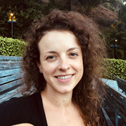A SMART way to efficiency and cost reduction in stem cell manufacturing

It goes without saying that the importance of cell therapy as a field of medicine ever increases, literal cells used as living drugs to fight diseases or restore and replace damaged cells.
Nonetheless, obtaining high-quality raw materials is an ongoing difficulty in cell therapy manufacturing, particularly as regards mesenchymal stem cells (MSCs), due to the complex and time-consuming nature of traditional methods of stem cell extraction from human bone marrow, which use antiquated centrifugation techniques.
So it was that pharmaphorum spoke with Dr Kerwin Zeming Kwek, co-author and senior research scientist at the Singapore-MIT Alliance for Research and Technology (SMART) – MIT’s research enterprise in Singapore, in collaboration with the Agency for Science, Technology and Research (A*STAR) Bioprocessing Technology Institute (BTI) and National University Health System (NUHS) – and Professor Jongyoon Han, supervisor and co-lead principal investigator at SMART – both researchers at the Critical Analytics for Manufacturing Personalized-Medicine (CAMP) Interdisciplinary Research Group (IRG).
Lessening complexity, increasing speed and accessibility
The CAMP IRG has developed a method capable of extracting MSCs directly from pure bone marrow fluid ten times faster – with double the stem cell yield and a reduction in donor discomfort due to less bone marrow being extracted – than traditional methods. It provides a step forward, towards greater accessibility and efficiency when it comes to advanced medical treatments that use MSCs, such as for osteoarthritic, autoimmune and infectious diseases, and neurological disorders.
The breakthrough paper, ‘Scalable mesenchymal stem cell enrichment from bone marrow aspirate using deterministic lateral displacement (DLD) microfluidic sorting’, was published in the journal Lab on a Chip. Deterministic Lateral Displacement (DLD) microfluidic technology is a label-free cell-sorting method that distinguishes between stem cells and blood cells, without requiring reagents (which can be costly) or complex processes.
Intrigued, we spoke with the researchers in order to find out more about the platform and, indeed, about mesenchymal stem cells.
“Mesenchymal stem cells are stem cells that are actually derived from the bone marrow,” explained Dr Kwek. “These stem cells within the bone marrow […] are really useful in terms of differentiating or changing into useful cells for different types of disease for therapeutic outcomes. For example, there are a lot of studies or clinical trials working on using these stem cells for acute myocardial infarction, which is a heart attack, even for knee osteoarthritis, rheumatoid arthritis, even diabetes. A lot of new research is being discovered on the effects of stem cells. This is [their] power.”
Lowering extraction volume, decreasing pain
However, traditionally, these stem cells are harvested from the bone marrow, and it's a very painful process.
“They extract from either the pelvis or the back or the bone,” Dr Kwek said. “It's a big needle with about 50 ml, which is very significant […] equivalent to maybe one quarter of a cup: your usual coffee cup or even up to half, depending on how big your cup is. The current extraction methods [are] poor yielding, because you only get 10% yield from this amount of bone marrow. In this 50 ml of bone marrow, you will only have about 100 stem cells. It's extremely rare. Thus, they need a large volume to extract sufficient stem cells to have the therapeutic outcome.”
It was this state of affairs that was the impetus behind the current research – and with success, including better yield, shorter time to process, and a consistency of product for therapeutic use. That technology is deterministic lateral displacement (DLD) microfluidic technology.
“We are the first paper to show how DLD can improve bone marrow efficacy for downstream therapy, to put it as layman as possible,” explained Dr Kwek. “My background is, I'm a microfluidics expert [and] microfluidics work is actually the research on micro flows in small channels, such that we can control how the cells move in a micro channel. With very high precision, we are able to then design very unique structures in the micro channel that can sort out cells of interest with high precision.”
“The current state of the art is this method called density gradient centrifuge, where you sort cells by the density,” he continued. “It's a very well-established method that all labs use, but it comes with a lot of shortcomings. Obviously, the current yield can be as low as 10%. That itself is a very big bottleneck for clinical outputs. You can imagine that, if we can solve this, we can actually probably extract 10 times less volume from the patient. That can be really powerful. That's probably the Holy Grail. With new technologies coming up and what we are researching on, I think we are on track to be able to see something exciting in the next decade.”
Research at SMART-CAMP: A different, collaborative angle to global focus on cell and gene therapy
SMART-CAMP’s general research is focused on personalised cell therapy.
“My colleagues are also working on studying how stem cells have immunomodulatory effects,” said Dr Kwek. “One of the goals that we have is that, if we are able to sort faster with automation and the ability to get a better yield, can we then deploy this in a more streamlined manufacturing of cell therapy products for patients so they can get therapy faster or can we improve discovery of new therapy treatments with smaller donor samples?”
“A lot of this research came from really multidisciplinary collaborations,” he continued. “Being in SMART [has given] me the exposure to work with clinicians, with physicists, and with biologists. We really start to see how the basic science research can now make an impact with such collaborations across multidisciplinary fields […] As scientists, sometimes it's really important for us to expand our horizon and collaborate such that our research can really impact across different industries.”
“I think whatever is done in Singapore is also very interesting because in Singapore [is] a small city,” he concluded. “Just by going across the road, we are able to find a biologist. Just across the road, we are able to get a hospital to collaborate with us. Then, we are situated in a very nice ecosystem. I'm quite thankful for that. Perhaps to accelerate science research, such collaboration is very much needed.”
“There is a lot of interest in cell and gene therapy right now, in the entire world,” added Dr Kwek’s colleague, Professor Jongyoon Han. “I know that the UK has a huge programme on this; Japan certainly has a huge programme; America [too]. Everybody wants to do this. What we have found so far, at least, is that a lot of the focus and emphasis is actually on developing new medicine in cell and gene therapy, not necessarily on improving the manufacturing of the cell and gene therapy. That's the part that I'm quite intrigued and excited about.”
“At the end of the day, it is one thing to develop a life-saving drug that is curing an incurable disease, [but] if it takes $5 million or $10 million for each person to get that medicine - which now seems to be the case for some of the newer, exciting medicines – then, ultimately, that's going to be the bottleneck for everyone,” Prof Han said.
“Even though DLD cell sorting has previously been demonstrated, what is new in this work is that we were able to deploy the technique at a sufficiently high processing flow rate to impact real-world stem cell manufacturing workflow,” Prof Han stated. “Biomanufacturing and bioprocessing are areas in which I see much potential for applying microfluidics technology to improve overall efficiency and reduce the cost significantly.












